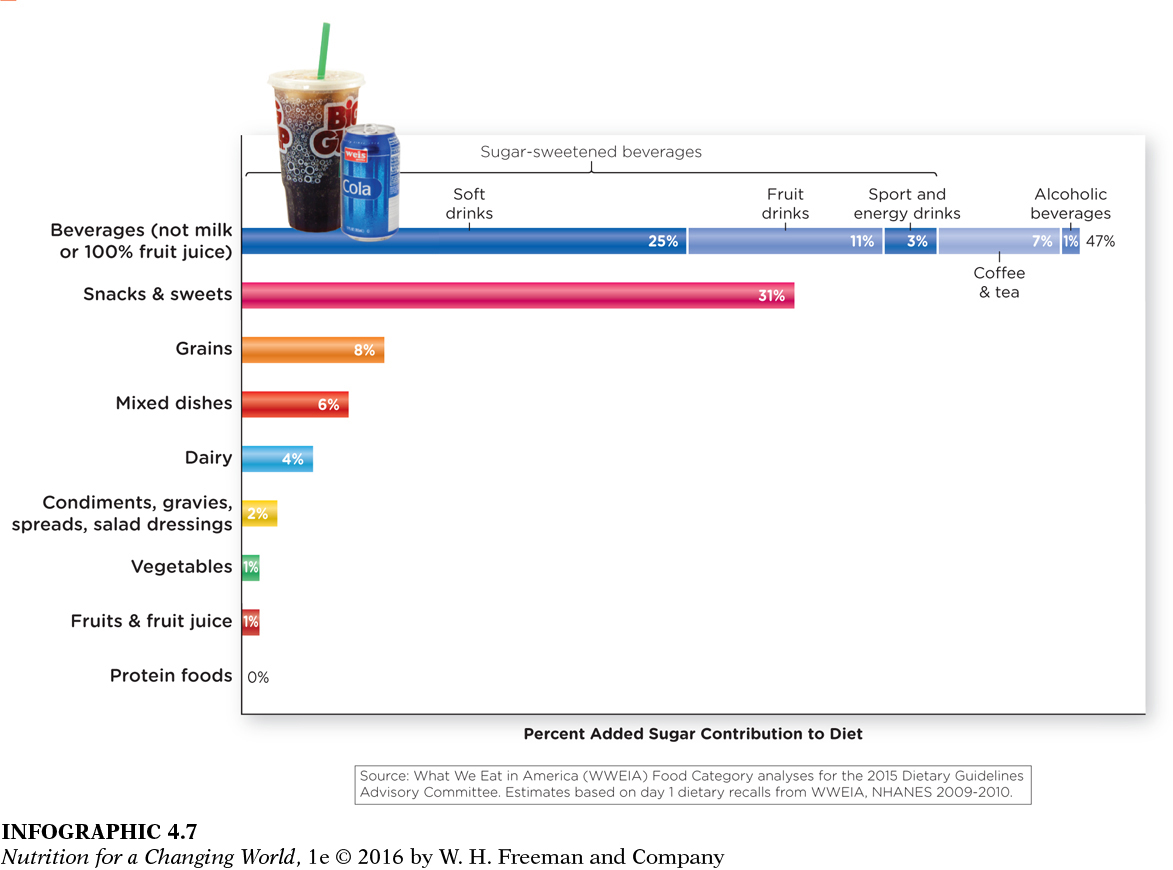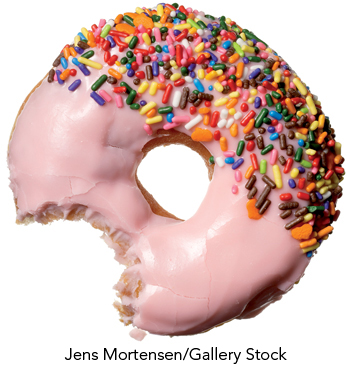ADDED SUGARS
Sugars in the form of syrups and other caloric sweeteners are often added to food products add sweetness and enhance palatability. These added sugars also have functional roles in preserving foods, browning of baked items, and improving texture and appearance. On a food label, they are listed by a wide variety of names such as “brown sugar,” "corn sweetener," “dextrose,” “fructose,” “fruit juice concentrate,” “glucose,” “honey,” “invert sugar,” “lactose,” “maltose,” “molasses,” “raw sugar,” “sucrose,” and “table sugar”. Another common and controversial added sugar is high fructose corn syrup (HFCS)which differs slightly from sucrose or table sugar in that it contains 55% versus 50% fructose in relation to glucose. Added sugars do not include naturally occurring sugars like those found in fruit or milk. (INFOGRAPHIC 4.7)

Question 4.7
 What food category does not contribute added sugar? Which type of beverage contributes the most added sugar?
What food category does not contribute added sugar? Which type of beverage contributes the most added sugar?




Added sugars aren’t just found in desserts and sweet snacks; they also lurk unexpectedly in processed foods such as ketchup, sandwich bread, and pizza. And, as Mozaffarian discovered, they are also found in many foods advertised as containing whole grains. Sugars are added to whole grain foods to improve consumer acceptance. To help consumers better assess added sugars in foods, proposed food label changes by the FDA (see chapter 2) would require the inclusion of “added sugars” on all packaged foods.
Most Americans consume too much added sugar, eating on average about 270 calories per day or 13% of total calories. There are two main problems associated with this excessive consumption of foods with added sugars. The addition of sugars to foods adds substantial calories without adding significant bulk; this increases the energy density of foods and is likely one contributing factor to the increased prevalence of obesity around the world. Added sugars also provide no additional vitamins or minerals, and are therefore empty calories that decrease the nutrient density of foods. To help people move towards healthy eating patterns and not exceed calorie limits, the 2015 Dietary Guidelines for Americans recommend consuming less than 10% of total calories from added sugar (see chapter 2.)